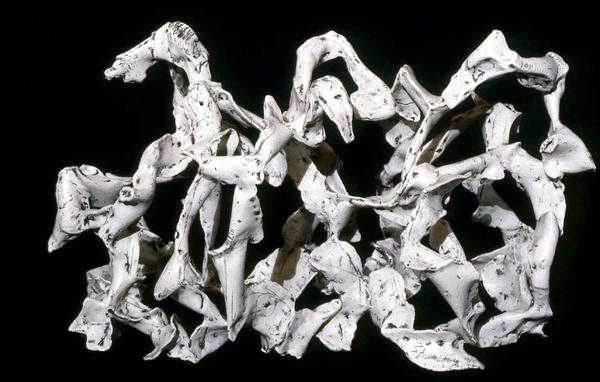 As a descendent of those affected by the Holocaust, its long-reaching effects play an important role in artist Roy Strassberg’s pottery and sculpture.
As a descendent of those affected by the Holocaust, its long-reaching effects play an important role in artist Roy Strassberg’s pottery and sculpture.
His interest in working with themes related to the Holocaust trace back to 1958, when Strassberg, interim chairman of the Department of Art, recalls seeing a documentary on television with his father in New York.
The show, titled “Remember Us,” focused on Nazi concentration camps, a subject that had been often broached by his family but never fully explained.
Strassberg said the first images he saw of the camps were “horrific.”
“I remember laughing because I was embarrassed seeing naked women being forced to run through the streets of either Poland or Germany – wherever it was – and my father got terribly angry,” Strassberg said.
After that interaction, Strassberg began to understand the significance those events held to his personal family history.
“We didn’t talk much about the subject, but it’s sort of palpably in the air in terms of the kind of experience I had culturally, growing up where I did with the family I did and the family history we had,” he said. “My grandparents had huge families, many of whom did not come to America and all of whom perished in one way or another because of the Holocaust.”
But Strassberg didn’t always focus his work on the Holocaust.
Rather, the sculptor began his career producing more traditional works, pushing aside his initial interest in portraying themes and images related to the Holocaust.
After practicing pottery in college, Strassberg realized in graduate school that he wanted to instead shift his focus toward ceramic sculpture.
“I got really good at it, and I got really tired of it,” Strassberg said of a period during the 1980s, which he spent his career producing art he calls “almost decorative” and “overly careful.”
In 1992, he returned to his earlier work in Holocaust themes.
“My career took a trajectory for the worse when I started to work on what I considered to be important,” Strassberg said. “The work is not attractive in a traditional sense. You could call it grotesque, you could call it ugly.”
Strassberg said the visual representation of these horrific events is a means to facilitate conversation.
“It’s about issues I think that can’t be addressed with the aesthetic response that you would have to different kinds of subjecs,” he said.
His work has recently included geometric pots based on aerial views and topographical maps of concentration camps. In contrast to his earlier sculptures, which he said he thinks “looks like the Holocaust,” the pots are neutral but meant to evoke the same sentiment.
“As a person of my ethnic and cultural and religious background, it’s just part of the conversation and perhaps always will be,” Strassberg said. “Somebody has to do it. The story needs to be told. The survivors, most of them are gone, somebody has to tell the story, and it might as well be me.”
Story: LOVEY COOPER, A&E Reporter
Photo Courtesy of: Roy Strassberg

